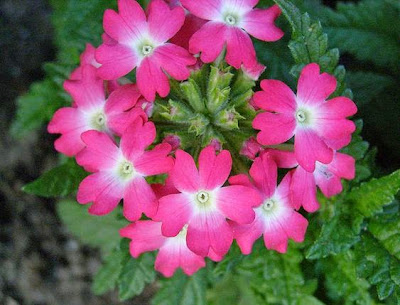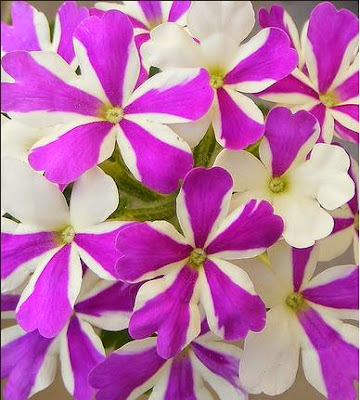Type of Flower
Verbena:
Verbena is a genus in the family Verbenaceae. It contains about 250 species of annual and perennial herbaceous or semi-woody flowering plants. The majority of the species are native to the Americas and Europe.
The leaves are usually opposite, simple, and in many species hairy, often densely so. The flowers are small, with five petals, and borne in dense spikes. Typically some shade of blue, they may also be white, pink, or purple, especially in cultivars.
The genus can be divided into a diploid North American and a polyploid South American lineage, both with a base chromosome number of seven. The European species is derived from the North American lineage. It seems that verbena as well as the related mock vervains (Glandularia) evolved from the assemblage provisionally treated under the genus name Junellia; both other genera were usually included in the Verbenaceae until the 1990s.Intergeneric chloroplast gene transfer by an undetermined mechanism – though probably not hybridization – has occurred at least twice from vervains to Glandularia, between the ancestors of the present-day South American lineages and once more recently, between V. orcuttiana or V. hastata and G. bipinnatifida. In addition, several species of verbena are of natural hybrid origin; the well-known garden vervain has an entirely muddy history. The relationships of this close-knit group are therefore hard to resolve with standard methods of computational phylogenetics.
How to grow verbena, you’ll want to locate this tough specimen where it gets 8 to 10 hours of sun each day.
The verbena flower is not particular about soil, except that it must be well-draining. Poor soil is acceptable for verbena growing conditions. Perennial varieties of the verbena flower are often lost when planted in soil that becomes soggy following heavy winter snow or spring rain. Good drainage can offset this problem. Improve drainage before planting verbena by working in well composted, organic material.
While the verbena flower is drought resistant, the blooms are improved with regular watering of an inch or so each week. Water verbena plants at the base to avoid wetting the foliage. However, verbena plant care may not include weekly water if rainfall in your area has reached an inch or more.
A limited application of complete, slow-release fertilizer is also a part of verbena plant care. Apply in spring and again following the occasional trims needed for optimum bloom.
When planted in proper verbena growing conditions, expect blooms the first season. Continued blooms throughout the summer are possible if the gardener keeps the plant trimmed back. Some are hesitant to remove parts of the plant regularly, but this is often necessary when planting verbena for summer blooms. When blooms slow, trim the entire plant back by one fourth for a new show of flowers in 2 to 3 weeks. Fertilize lightly following the trim and water well. Repeat this step as needed when learning how to grow verbena successfully.
When planting verbena, remember to water, fertilize and trim for long lasting color in the summer garden and beyond.
Verbena has longstanding use in herbalism and folk medicine, usually as an herbal tea. Nicholas Culpeper's 1652 The English Physitian discusses folk uses. Among other effects, it may act as a galactagogue (promotes lactation) and possibly sex steroid analogue. The plants are also sometimes used as abortifacient. Verbena has been listed as one of the 38 plants used to prepare Bach flower remedies,a kind of alternative medicine promoted for its effect on health. However according to Cancer Research UK, "there is no scientific evidence to prove that flower remedies can control, cure or prevent any type of disease, including cancer".
The essential oil of various species - mainly common vervain - is traded as Spanish verbena oil. Considered inferior to oil of Lemon verbena in perfumery, it is of some commercial importance for herbalism and it seems to be a promising source of medical compounds. Verveine, the famous green liqueur from the region of Le Puy-en-Velay (France) is flavored with these vervains.
References:
http://en.wikipedia.org/wiki/Verbena
http://www.gardeningknowhow.com/ornamental/flowers/verbena/growing-verbena-plants.htm




















No comments:
Post a Comment